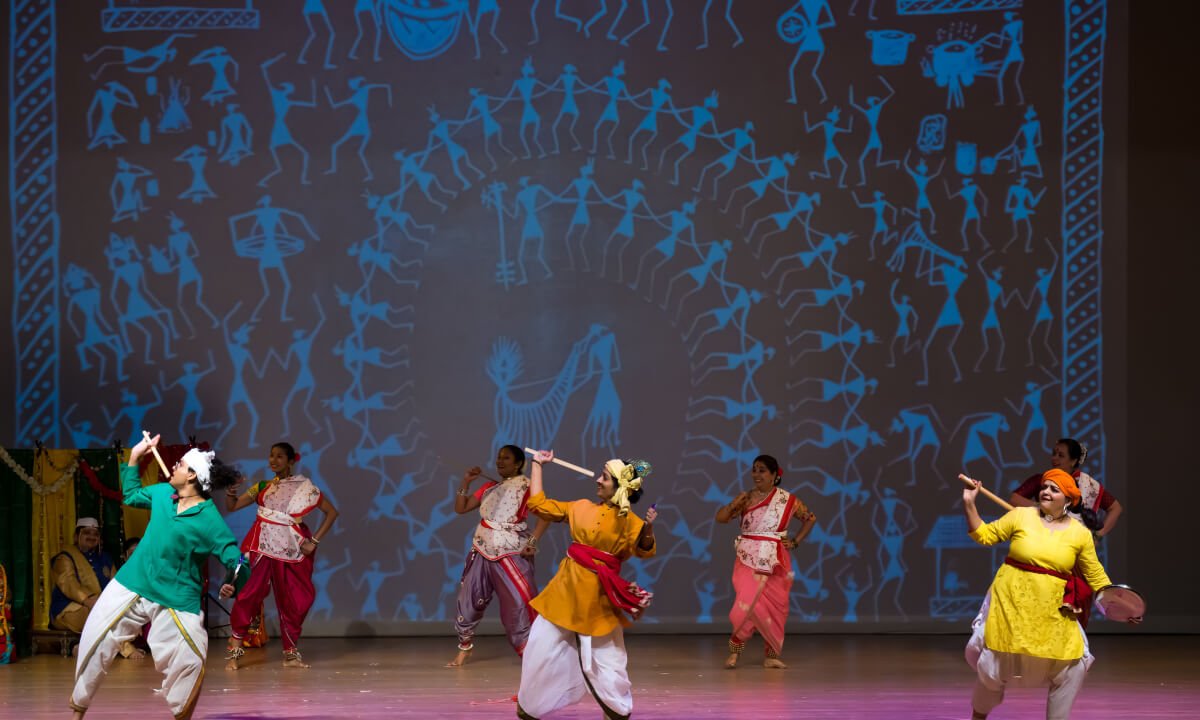folk dance
A traditional tribal dance of Maharashtra, performed during festivals to celebrate heritage and unity.

Pawara (Pavara) folk dance is a vibrant traditional dance form of the Pawara (Pavara) tribe, an indigenous community primarily residing in the Nandurbar, Dhule, and Jalgaon districts of Maharashtra and parts of Madhya Pradesh and Gujarat. This dance is an integral part of their cultural identity, performed during festivals, harvest celebrations, and community gatherings as an expression of joy, unity, and heritage.
The Pawara folk dance choreography is energetic, synchronized movements, rhythmic stepping patterns, and circular formations. Both men and women participate in this performance, moving in harmony to the beats of traditional folk music. The dancers often hold hands or use props like sticks and colorful scarves, adding a dynamic visual appeal to the performance.
NSDA students performing Pawara on stage.
A defining aspect of Pawara dance is its lively music, played on traditional tribal instruments such as the Dhol (double-headed drum), Tuntuna (string instrument), and Manjira (cymbals). The rhythmic beats, accompanied by soulful tribal songs, narrate tales of nature, folklore, and community life. The songs often reflect themes of agriculture, festivals, and ancestral traditions, strengthening the cultural bond within the Pawara community.
The attire worn by Pawara dancers is deeply rooted in their tribal traditions. Women wear colorful sarees with traditional jewelry, including silver ornaments, beaded necklaces, and anklets, while men don dhoti-kurtas or simple tribal attire. The vibrant clothing, graceful movements, and expressive storytelling make the Pawara dance a captivating visual and cultural experience.
Dancers use plates and sticks as props while performing Pawara folk dance.
Beyond entertainment, Pawara dance is a living tradition, passed down through generations while preserving the tribe’s history and collective memory. It remains an essential part of Pawara festivals and social life, offering a glimpse into the rich heritage of Maharashtra’s tribal communities.